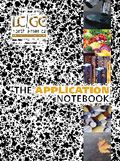SELS — Solvent Enhanced Light Scattering
Viscotek has been a strong advocate of good chromatography as a prerequisite for GPC (Gel Permeation Chromatography) data accuracy. Our recent work in application development has been driven by extremely difficult samples from industrial, biopharmaceutical, and academic sources. These samples present challenges ranging from sample solubility, column adsorption as well as detection issues. This report will attempt to highlight a new approach that could be very helpful in certain advanced GPC applications.
Viscotek has been a strong advocate of good chromatography as a prerequisite for GPC (Gel Permeation Chromatography) data accuracy. Our recent work in application development has been driven by extremely difficult samples from industrial, biopharmaceutical, and academic sources. These samples present challenges ranging from sample solubility, column adsorption as well as detection issues. This report will attempt to highlight a new approach that could be very helpful in certain advanced GPC applications.
Figure 1
Traditionally, the dissolution (sample) solvent and the mobile phase are one and the same in GPC. However, a closer look at the demands of sample solvent and mobile phase suggests that this should not always be the case. For the sample solvent one simply wants a solvent that quickly and completely dissolves the sample. Cost and chemical structure are secondary issues. For the mobile phase the requirements are significantly different:
- Because of the high consumption, material cost is a significant factor.
- The dn/dc of the sample in the mobile phase should be as high as possible so that the RI and, especially, the LS detector sensitivities are enhanced. This effectively means that one wants solvents with low values of RI for the mobile phase.
- The mobile phase does not have to dissolve the sample; only support (or maintain) its solubility during the analysis.
Most low RI solvents, such as acetone and methanol for example, are weak or non-solvents for mid-to-low polarity polymers. But they will often support the solubility if the sample is dissolved in a stronger solvent and then diluted or injected into the weaker mobile phase solvent. We call this type of analysis Solvent Enhanced Light Scattering GPC.
The chromatogram shows a typical SELS example. A particular Fluoro-Polyester is quite soluble in THF, but the dn/dc is very low in THF. We would like to increase the dn/dc value to get better LS response. We could achieve that in a low refractive index solvent like Acetone.
However, the sample is not soluble in Acetone. But by dissolving the sample in THF and injecting the solution into a mobile phase of Acetone (SELS concept), we were able to maximize the accuracy and the reliability of the GPC-LS analysis while consuming one of the cheapest and safest solvents available.

Viscotek Corporation
15600 West Hardy Road, Houston, TX 77060
tel. (281) 445-5966, fax (281) 931-4336

The Benefits of Custom Bonded Silica
April 1st 2025Not all chromatography resins are created equal. Off-the-shelf chromatography resins might not always meet the rigorous purification requirements of biopharmaceutical manufacturing. Custom bonded silica from Grace can address a wide range of separation challenges, leading to real performance improvements. Discover more about the latest innovations in chromatography silica from Grace, including VYDAC® and DAVISIL®.
5 Things to Consider When Selecting a Chromatography Silica
April 1st 2025Particularly in the pharmaceutical industry, drug purity isn’t just a goal – it’s essential for achieving safety, stability and efficacy. However, purification is easier said than done, especially with challenging molecules like DNA and RNA “oligonucleotides,” due in large part to their diversity and the range of impurities that can be generated during production. Enter DAVISIL® chromatographic silica, with a wide range of pore diameters and particle sizes to meet your specific application, performance and sustainability requirements. Before you choose the chromatography resin for your next purification application, take a look at these 5 considerations.
Automating Protein Purification: Efficiency, Yield, and Reproducibility
March 27th 2025Recent advancements in automated protein purification stress the importance of efficiency, scalability, and yield consistency. This eBook compares different purification platforms, highlighting their impact on downstream applications and demonstrating how automation enhances throughput and process control.
MilliporeSigma: Ultrapure Water for Sensitive LC-MS Analysis of Pesticides
March 25th 2025The aim of the study was to illustrate the efficiency of Milli-Q® water purification systems in eliminating pesticides from tap water, thereby producing and delivering reliable and consistent-quality ultrapure water suitable for pesticides analysis














